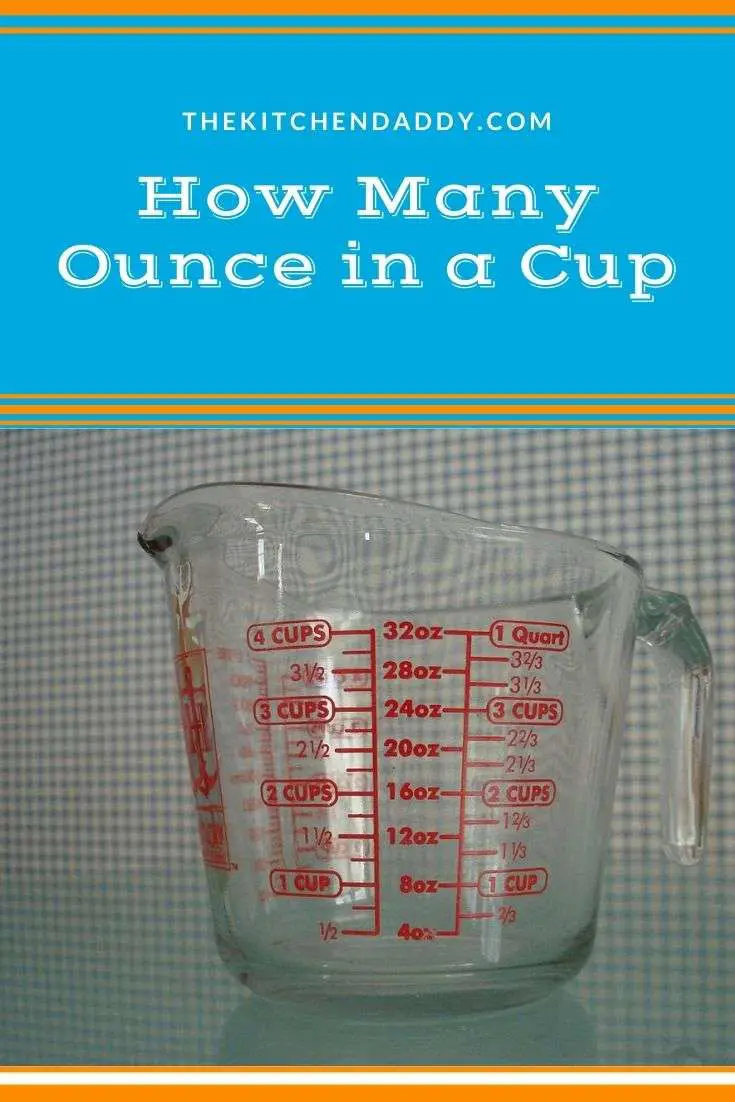Have you ever been in a situation where you craved food and thought it would be nice to have as either a breakfast, lunch, dinner, or an after treat?
Did you locate the recipe only to find out that the required measurements were not the ones you have been accustomed to or were not available in your area? This can be somewhat annoying, isn’t it?
If a recipe is given in ounce, and the only available measurement you have is a cup, you definitely will need to convert ounces to cups and this has been a challenge for a good number of cooks and chefs.
Well, not to worry, read further to understand the subject of how many oz in a cup and how to make the necessary conversions.
Understanding how many ounce in a cup is not an easy one, but can be understood using a simple rule. For measuring liquids, 1 cup equals 8 ounces. For measuring dry ingredients, you should weight the ingredients with a scale or make use of dry measuring cups.
Cups Vs. Ounces

Cups and Ounces are units of volume measurement which are used in a good number of American, British, and even Canadian cooking/recipe books. This is especially true of old cooking books.
Generally, most people know how much an ounce is, but sometimes, understanding how many fluid ounces in a cup is not an easy one.
One of the reasons for the complication in measurements say in cups and ounces is the fact that the volume of all known cups is not equal. This is a result of the difference in the definitions of the container in various systems.
Additionally, the US customary ounces are different in sizes from imperial ounces, with the US variant being approximately 4% larger than that of the UK.
Measuring in Ounces
Ounces, although originally a unit of weight, but was extended to measuring volume too. This development has gone a long way in increasing the accuracy of measurements and thus makes more room for other conversions.
So basically, ounces are used for two measurements – weight and volume ounce. As much as the name is similar, their measurements are not.
Weight ounces are specialized in measuring dry ingredients such as flour, sugar, and so on. While volume ounces are specialized in measuring liquids or wet ingredients.
The implication of this is that, when a recipe requires measurement of a dry ingredient in ounces, it is best to weight using a scale. If it requires measurement of a wet ingredient, using liquid measuring is advised.
Measuring in Cups
Cups on the other hand as a volume unit are used in recipes to primarily measure liquids and some foods. They also come in several sizes (the US, imperial, Japanese, and metric). Like the ounces, these systems substantially differ in sizes. They also exist in two types – dry and liquid measuring cups.
Like the ounces, dry measuring cups are specialized in measuring dry ingredients such as berries, nuts, and flour, while liquid measuring cups are obviously for measuring liquids such as water, yogurt, and cooking oil.
For dry measuring cups, you pour the exact amount of intended ingredient and level off using a flat edge. Liquid measuring cups on the other hand need you to pour a liquid into the cup and even off without spilling using a measurement line.
How to Convert Ounces to Cups and Vice Versa
Well, every chef (so to say) knows that recipes are not just a matter of guesses but an art. Thus, any misstep might lead to the ruin of that recipe. We have already established that different rules are applied when it comes to the measurement between dry and wet ingredients.
For liquids, the conversion rule is simply this: 1 cup equals 8 ounces. This implies that it takes 8 fluid ounces to get 1 cup of liquid or an equal of 28.3grams.
The rules completely change when it comes to the measurement of dry ingredients because of their variation in weight.
For instance, the weight of 1 cup of chocolate chips is a bit above 6 ounces and 1 cup of all-purpose flour is 4.5 ounces. A recommended rule of thumb for measuring dry ingredients will be to weight the ingredients with a scale or make use of dry measuring cups.
Additional Tips
It is important that when using any of these measurements, you use it from the same system. It is easier and the more straight forward to convert when you do so. When you do, the following conversion applies:
- 8 US fluid ounces is equal to 1 US customary cup
- 10 imperial fluid ounces is equal to 1 imperial cup
- 1.2 US cup is equal to 1 imperial cup
Final Words On How Many Ounce in a Cup
As you can see, understanding how many oz to cups can be a little tricky. Even some experienced cooks still find it confusing to do some of these conversions. It is important that you understand them as they can be very helpful when one of the units is not available.
So, with the above rules, you should be able to make the necessary conversions to put together the recipe you have been looking forward to.
It might not be easy at first, particularly when it comes to the liquid ounce. But, a little practice will help you gradually get accustomed to the conversions.
If after reading the above you still have questions to ask, feel free to drop them in the comment section. I will be glad to provide more value as soon as I can.
Did you like “How Many Ounce in a Cup (Ounces To Cups)”? We would greatly appreciate it if you share this on your favorite social media channel.

Be the first to comment